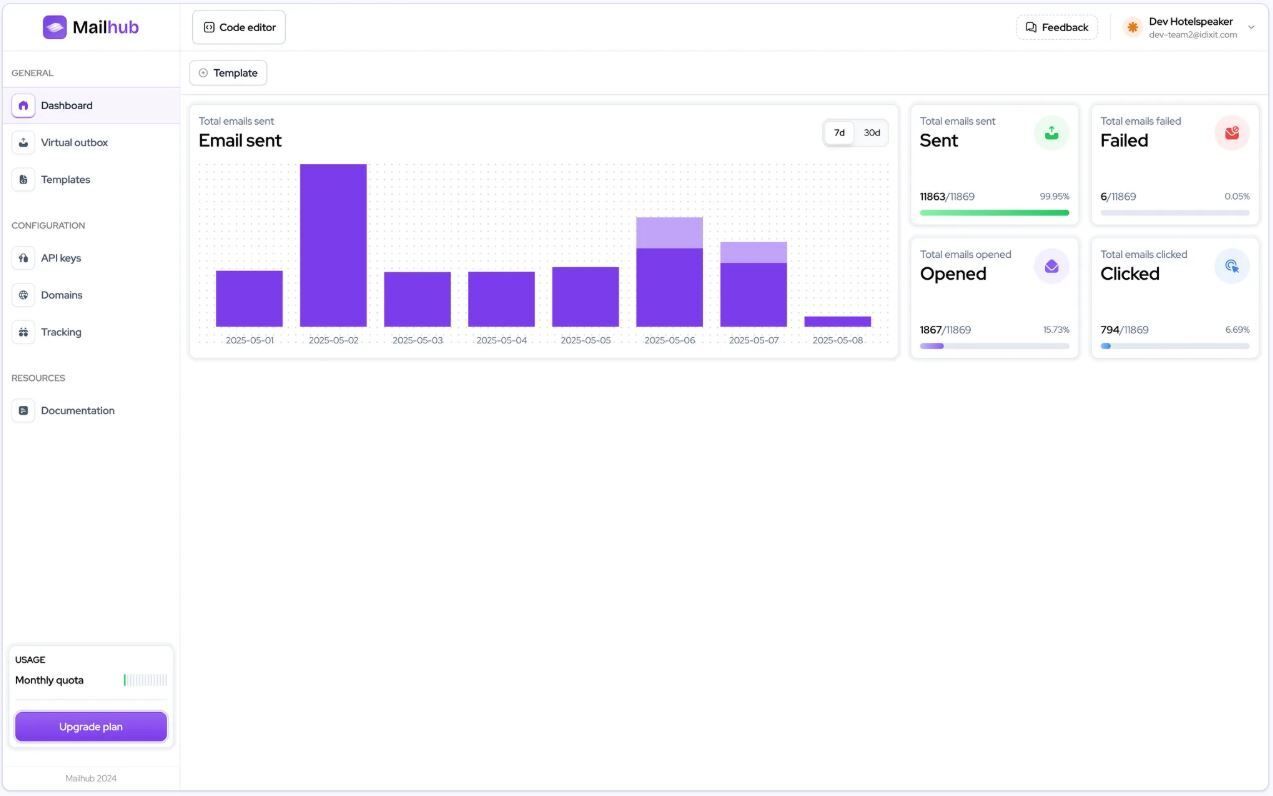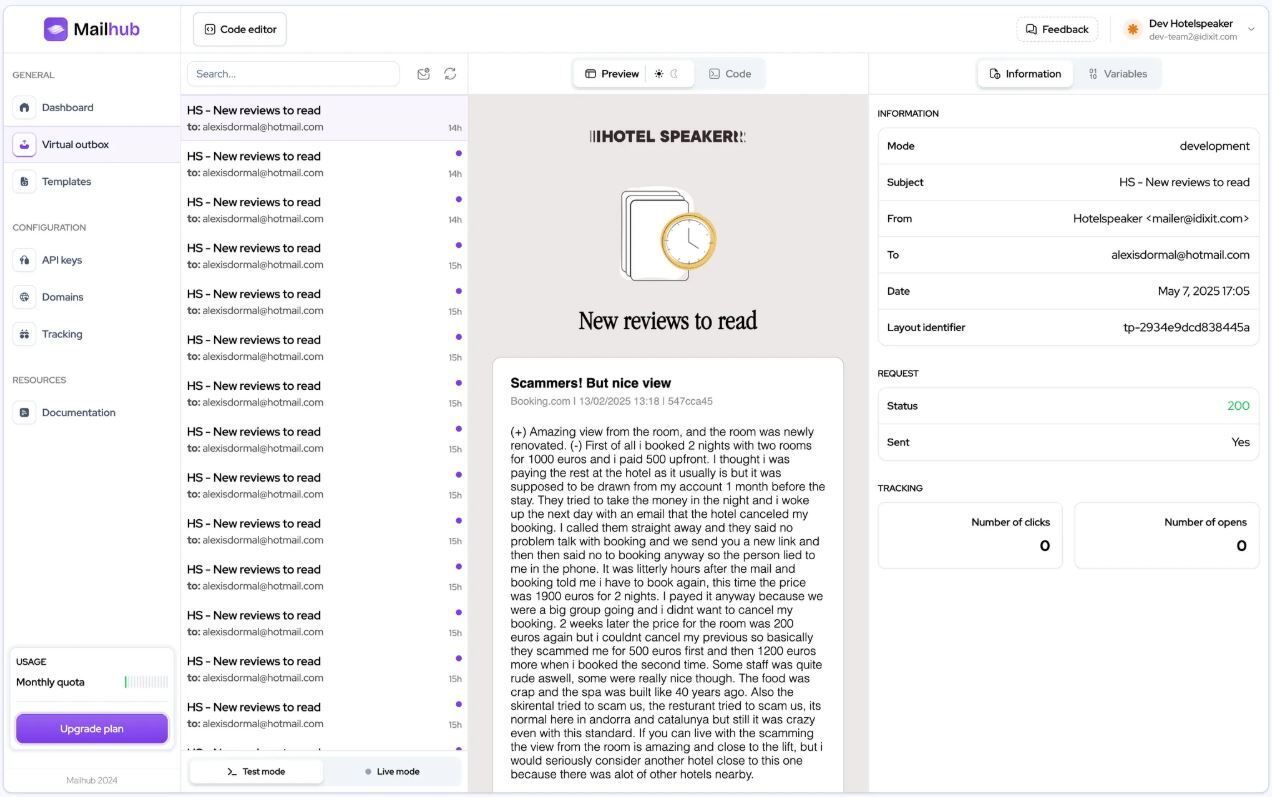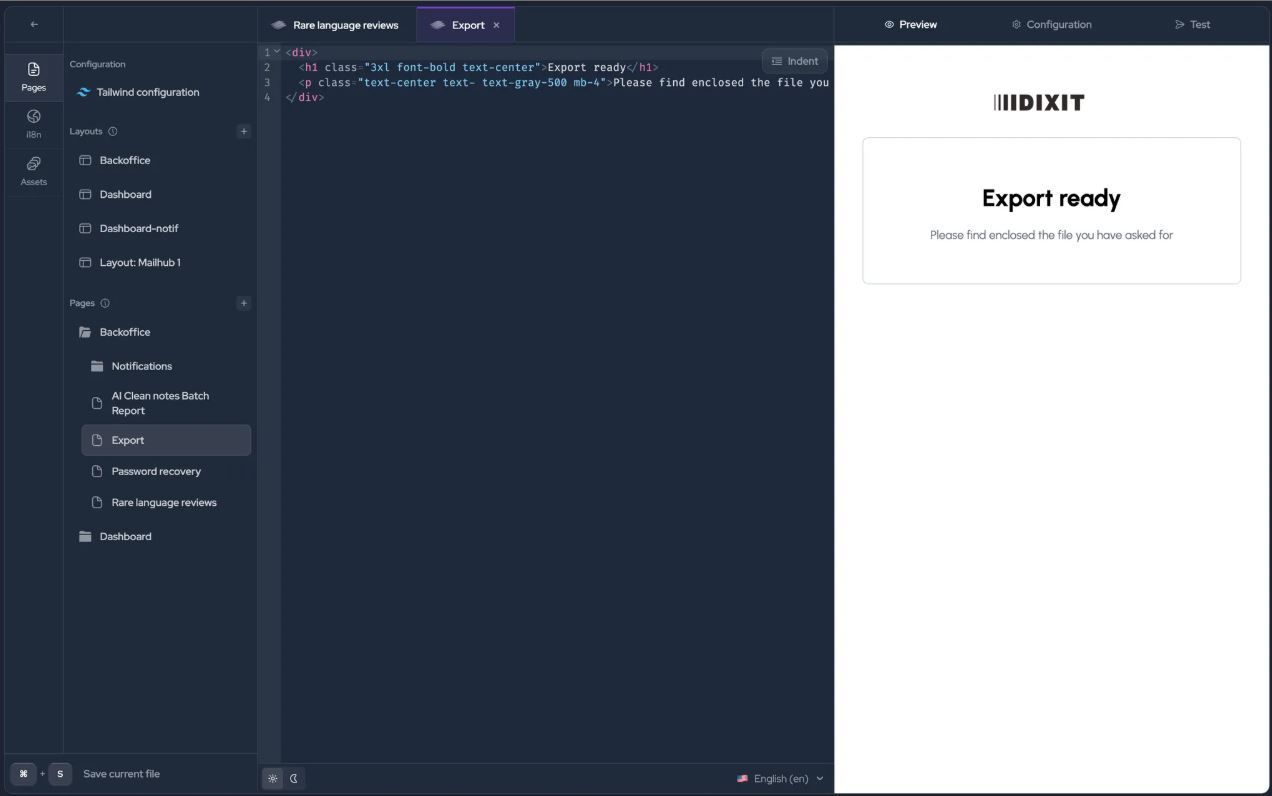- Fake Mayo
- Posts
- How Clément got his first 100 SaaS users via Hacker News
How Clément got his first 100 SaaS users via Hacker News
Meet Clément Jansens.
Clément Jansens is 27 years old and based between Brussels (Belgium) and Luxembourg. He works 9-5 as a full-stack developer at a startup called HotelSpeaker, which helps hoteliers respond to guest reviews across platforms.
Outside of his day job, he is also an indie hacker building his own SaaS products, mainly in the developer tools space.
Currently most of Clément’s 5-9 energy goes into Mailhub.

Clément Jansens - Founder of Mailhub
The story told by Clément Jansens
What is Mailhub?
Mailhub is a developer-focused transactional email API that makes sending and managing emails fast, multilingual, and visually consistent.
It supports Tailwind templates out of the box, includes a library of pre-built designs inspired by Vercel, GitHub, Stack Overflow, etc., and handles multilingual templates natively (no duplication for each language).
MailHub also offers full delivery monitoring: see exactly when, what, and to whom emails were sent, including open and click tracking, even across staging, development, and production environments.
Building and launching
The idea started with a first version called MailWind built in mid 2022, but I started seriously working on the new version (Mailhub) in mid 2023.
It’s a deliberate choice for now to try and do everything on my own. Even though, like many developers, I’d love to find that rare gem on the marketing side, I haven’t yet met someone I trust enough to build, together, a project into which I’m pouring so much time and energy.
MailHub was launched in mid 2024, after a full redesign and rebranding.

The homepage of Mailhub
Getting the first 100 users
It took less than a week to reach 100 registered users after launching Mailhub on Hacker News. I posted a short but honest summary of what the product does and how it compares to existing tools.
The post quickly climbed to the front page and brought in over 2,000 unique visitors in just 24 hours.
That said, while hitting 100 signups was exciting, only a small portion of those users actually tested the product in depth or adopted it long-term. Most were curious visitors or early-stage indie hackers who signed up to take a look.
It taught me that “100 users” can mean very different things, especially when you’re trying to convert attention into actual usage and feedback.
More marketing
Bootstrapping everything I initially promoted Mailhub by sharing its progress and small wins on X (examples below). That brought a few visits, but nothing major.
onboarding v3 - work in progress
— Clément Janssens 📌 (@letsbuildtogthr)
5:10 PM • Oct 15, 2024
Fresh news
Landing page:
🎨 Background color: switched to gray
⏩ Update "Go to Dashboard" button : Label + colors + add trigger (Press S to start...)
🎛️ Added Compare Component instead of switch button (Code preview)
💰 Update color CTA pricing (only for paid sub)Onboarding:
— Clément Janssens 📌 (@letsbuildtogthr)
3:40 PM • Oct 3, 2024
I used to post all of this from my main account. But I ended up creating a second one because old colleagues, friends, etc. were following what I was doing. I wanted to build quietly on my own, without mixing personal, professional, and indie life.
Search engine optimization
I didn’t spend much time on SEO, partly due to a lack of motivation, but also because the competition is already very well ranked. I also struggled to figure out how to rank for a product that’s so different.
Competitors are focused on marketing emails or are large CRMs, whereas my value proposition is much smaller and more niche. So I never really focused on SEO.
That said, I did write one blog post (How to send multi-language emails) which is getting a bit of traction, as well as a page featuring Tailwind email templates.
My main marketing struggle
My biggest challenge has been growing visibility consistently over time. I don’t have a large X following (yet), and I’m not naturally great at self-promotion. I prefer building.
So even though the product solves real pain points for developers, getting it in front of the right people has been tough.
Another challenge is that email infrastructure is a crowded and competitive space: many devs default to big names like SendGrid, Resend, or Postmark. So MailHub has to prove itself not just on pricing or features, but on clarity and trust - which is hard without a known brand or strong testimonials.
Building credibility takes time.
I launched MailHub on Product Hunt, but the results were underwhelming. I didn’t have an existing community or a large following to mobilize for upvotes.
As a result, the product never really gained traction on the platform and got buried quickly. I learned that Product Hunt isn’t just about “launching”, it’s about having a warm audience ready to support you on launch day. Otherwise, you're invisible in the noise.
Another strategy that didn’t work well was posting on Reddit threads (examples below).
I spent time writing detailed answers on r/SaaS and r/webdev, but they rarely led to clicks or signups. People on Reddit are highly skeptical of self-promotion, even when you’re genuinely trying to help.
Current numbers (as of May 2025)
~500 registered users
Steady stream of weekly sign-ups
25K emails sent
A few paying users (small but growing MRR - 50€)

Mailhub visitor stats
The business model
The business model of Mailhub is fairly simple. Like many email APIs, it’s based on quotas.
The free plan allows up to 500 emails per month and 50 emails per day. After that, users need to upgrade to the premium plan, which starts at €10 and goes up to €300.
But Mailhub isn’t just a standard email API. As mentioned earlier, it offers a range of features, some of which are included in the premium plan, such as:
Ability to use more than 3 templates
Support for 2 languages
Removal of watermark
Uploading larger assets
However, I’ve kept some features, which are usually paid with competitors, available for free, like the number of domains you can use.
Mailhub screenshots

Screenshot from Mailhub

Screenshot from Mailhub

Screenshot from Mailhub
Here you’ll find Clément Jansens
Please also note that Clément is currently working on a new AI-powered customer support agent called Retalk.bot - a tool that can handle up to 90% of support tickets autonomously and escalate only the edge cases.
It understands your business, executes workflows, and calls APIs on your behalf.
Reply